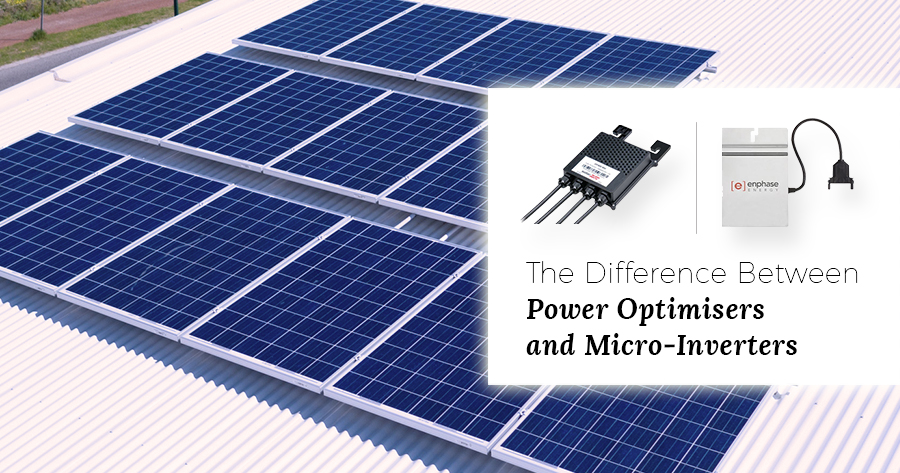The Difference Between Power Optimisers and Micro-Inverters
String Inverters
In traditional solar PV systems, the DC power your panels generate is transmitted to a single string solar inverter. This converts the DC power to AC power, which is then used by appliances in your home or exported to the grid. Fronius Symo and SMA Sunny Boy are examples of traditional string inverters.
Micro-inverters and power optimizers, referred to as Module-Level Power Electronics or MLPEs, are a twist on the traditional solar PV system set up. While micro-inverters completely replace the need for a string inverter, power optimisers work in conjunction with the string inverter to increase power output.
Micro-Inverters
How It Works:
Instead of one central inverter, solar PV systems with micro inverters feature an inverter on the back of every panel. These micro-inverters perform the same function as a standard string inverter (conversion of DC power to AC power), negating the need for a standard inverter. Enphase is a common micro-inverter choice in Australia.
Advantages:
With a standard string inverter, if one solar panel suffers from decreased output due to shading, all panels can potentially suffer from the same decreased output.
Because the DC-AC conversion of micro-inverter systems takes place at the panel level, the output of each module is not affected by other modules. Micro-inverters also allow you to monitor the performance of individual solar panels.
Disadvantages:
Micro-inverters can be anywhere from double to three times the cost of standard string inverters, while not matching the same efficiency levels.
Because they sit on your roof with the panels, micro-inverters are more susceptible to extreme weather conditions.
Most micro-inverters are only rated to 65°C degrees, and with the temperatures on roofs in most parts of Australia (under a solar panel) getting a lot hotter than 65°C degrees in summer, your micro-inverters will be put under an incredible amount of stress, and may not function as designed.
Bottom Line:
While micro-inverters can increase the output of traditional systems with a string inverter by 6-8%, we don’t think they’re worth the hefty price increase, and potential unreliability in the harsh Australian climate.
Power Optimisers
How it Works:
Similar to micro-inverters, a power optimiser is a small box attached to the back of every panel. Unlike micro-inverters however, power optimisers work with string inverters to enable the maximum energy harvest from individual panels.
Power optimisers can be inbuilt in the panels themselves, like Canadian Solar’s new Smart Module, or sold and fitted on separately, like SolarEdge’s power optimiser.
Instead of converting DC power to AC power at the panel site like a micro-inverter, power optimisers condition DC power and send it to a string inverter. This approach results in higher system efficiency than a string inverter alone.
Advantages:
Like micro-inverters, power optimizers lessen the impact of shaded panels on the overall system performance and output, while also offering individual panel performance monitoring.
Less expensive than micro-inverters, high performance power optimisers like those from Solar Edge achieve all the same benefits at higher efficiency and with higher reliability.
Disadvantages:
While they cost less than micro-inverters, investing in power optimisers will cost more than purchasing standard panels and a string inverter.
Bottom Line:
Power optimisers are a great option where shading or a complicated roof would negatively impact the performance of your solar system. However, if you’re lucky enough to have an uncomplicated, unshaded roof, a string inverter by itself is still a great option.
For more information on solar for your home, including power optimisers, give us a call on 1300 074 669, or simply request a no obligation call back by clicking here.



